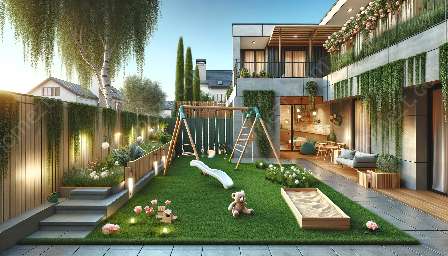When it comes to creating safe and engaging outdoor play areas for nursery and playroom settings, fences play a crucial role in providing security, delineating boundaries, and enhancing the overall aesthetic appeal. In this comprehensive guide, we will explore the significance of fences in outdoor play areas, discuss various types of fences, their benefits, and offer tips for integrating them seamlessly into nursery and playroom environments.
The Importance of Fences in Outdoor Play Areas
Fences serve as a protective barrier that keeps children safe within designated play areas. By installing fences, caregivers and parents can create secure environments where children can play, explore, and engage in educational activities without the risk of wandering away or encountering potential hazards.
Moreover, fences provide a sense of containment and structure, allowing children to develop a sense of independence while staying within a supervised area. This is particularly important for nurseries and playrooms, where young children need a secure space to explore and interact with their surroundings.
Types of Fences for Outdoor Play Areas
There are several types of fences that are well-suited for outdoor play areas in nursery and playroom settings. Traditional Picket Fences are classic options that exude a charming, timeless appeal, creating a picturesque boundary for play areas. Mesh Fences are lightweight, flexible, and easily portable, making them ideal for temporary play spaces or areas that require frequent reconfiguration. Wooden Privacy Fences offer a higher level of security and visual privacy, making them suitable for creating secluded play zones within larger outdoor areas.
Benefits of Different Types of Fences
Each type of fence offers unique benefits that cater to specific needs in outdoor play areas. Traditional picket fences, with their open design, allow for increased visibility and airflow while maintaining a playful aesthetic. Mesh fences are highly versatile and can be used to define various play areas or create temporary boundaries for outdoor activities. Wooden privacy fences provide a sense of seclusion and create a cozy atmosphere for focused play and learning.
Integrating Fences into Nursery and Playroom Environments
When integrating fences into nursery and playroom environments, it is essential to consider the overall design, safety measures, and aesthetic appeal. Fences should be installed securely to ensure stability and durability, especially in outdoor settings where they are exposed to the elements. Additionally, selecting child-friendly finishes and designs, such as rounded edges and vibrant colors, can enhance the visual appeal of fences while prioritizing safety.
Furthermore, incorporating gates within the fencing system allows for convenient access while maintaining control over entry and exit points. This is particularly useful in nursery and playroom settings, where caregivers need to supervise children during outdoor playtime.
Conclusion
Fences are integral components of outdoor play areas in nursery and playroom environments, offering safety, security, and a visually appealing framework for children to engage in active play and learning. By understanding the importance of fences, exploring different types of fences, and implementing them thoughtfully, caregivers and parents can create inviting outdoor play areas that promote the well-being and development of young children.


